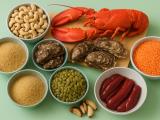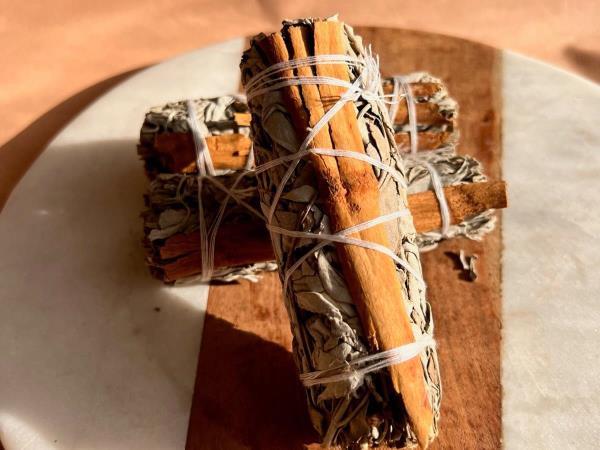This time we are not talking about exotic plants from the Amazon, but about something that you most likely already have in your kitchen or garden: sage and cinnamon. Two natural ingredients that are not only delicious but also incredibly healing - as confirmed by scientific research.
Why should a person who has sage growing in their garden die?
This question was once posed by Hippocrates himself, the father of Western medicine. And he had a good reason. Sage (Latin name Salvia officinalis) has been renowned as a medicinal plant for millennia. Even its name comes from the Latin word salvare, which means to heal or save. In the Middle Ages, it was even considered a plant of immortality.
Today, we also have concrete numbers. One study published in the scientific journal Journal of Traditional and Complementary Medicine showed that sage extract has a strong antibacterial, antiviral, and antifungal effect (Khan et al., 2020). This means that it can effectively combat microorganisms that cause inflammations of the respiratory tract, stomach, and intestines.
Another study published in Phytotherapy Research proves that sage can help reduce body temperature, alleviate pain, and improve digestive function (Hamidpour et al., 2014). Furthermore, they also found that regular consumption of sage tea enhances memory and concentration, which can be particularly beneficial for the elderly.
Cinnamon - a sweet warrior against bacteria
If sage is the king of herbs, then cinnamon is certainly its ally in the fight against winter ailments. Cinnamon, that warmly fragrant spice, has long been known for its healing properties. What is different today, though, is that we now have scientific evidence confirming these properties.
One of the most interesting studies comes from the Journal of Food Science, where it was found that just one teaspoon of cinnamon can eradicate up to 99.5% of Escherichia coli bacteria in just three days at room temperature (Chang et al., 2001). This means that cinnamon acts as a natural antibiotic, without the side effects often associated with synthetic medications.
Additionally, it contains cinnamaldehyde, a compound that has been proven to inhibit the growth of bacteria, fungi, and even some viruses (Ranasinghe et al., 2013). Cinnamon is also believed to help lower blood sugar levels, making it particularly beneficial for those struggling with insulin issues or type 2 diabetes.
When Sage and Cinnamon Combine...
Although sage and cinnamon are both extremely effective on their own, their powers are enhanced when used together. The combination of both herbs has anti-inflammatory, warming, and disinfectant properties - making it ideal for colds, flu, throat inflammations, and overall well-being.
Grandmas already knew that such a mixture helps alleviate bronchitis. By melting two tablespoons of sugar in half a liter of milk, as if making caramelized milk, and adding a teaspoon of chopped sage and half a teaspoon of cinnamon, you get a drink that not only warms but also helps clear the respiratory passages. Let it steep for 10 minutes, strain, and drink three times a day.
Sage Tincture - Drops of Strength
If you want to use sage more regularly and effectively, you can also prepare a tincture. This is a concentrated extract prepared by adding 20 grams of chopped sage leaves to a deciliter of 70% alcohol (such as vodka or pharmaceutical alcohol) and leaving it in a warm place for a month. Then strain it and take 10 to 15 drops daily, three times a day, with a little water or tea. Tincture is not suitable for pregnant women or children as it contains alcohol.
Tinctures are a great way to preserve the medicinal properties of plants and use them even out of season. One bottle is sufficient for several weeks and is excellent for prevention.
Sage Brandy - a Traditional Recipe
This recipe dates back to times when our ancestors primarily relied on what they had at home. Pour about 250 grams of fresh sage leaves with 1.5 liters of homemade brandy. Let it stand for three weeks, then strain it and add 1.5 kg of acacia honey. Wait another three weeks and drink a small shot glass each day. The drink is potent but also very effective for colds, flu, and immune system strengthening.
What Do the Numbers Say?
Studies show that sage contains more than 60 different types of antioxidants. Cinnamon also contains powerful phenolic compounds that reduce inflammation and oxidative stress. Regular consumption of both can also impact lowering blood pressure, improving sleep, and even reducing the risk of developing dementia (Akilen et al., 2012; Kennedy et al., 2011).
Nature Offers You Strength
If you want to avoid waiting rooms and antibiotics this winter, it may not be enough to make sage tea just once. Regular use of sage and cinnamon - whether as a drink, tincture, or spice - can seriously strengthen your immune system, improve your well-being, and even prolong your life. And the best part is - you can find all of this in your kitchen.
Give it a try, incorporate it into your daily routine, and feel the difference. You might notice within a few days that you sneeze less, sleep better, and have more energy. What if it's true, as believed by the Arabs, Romans, and Chinese: that sage is the key to a long life?
Datum: 24. APR 25 - GOOD TO KNOW
From Sage to Long Life. And if you add cinnamon...
If you are one of those who like to rely on tried-and-true homemade recipes, this article will especially excite you. The effects are truly incredible...
(FW)
 Would you like to be informed about news on the website?
Would you like to be informed about news on the website?
Just enter your e-mail
Sage benefits
Cinnamon health benefits
Sage and cinnamon remedies
Herbal remedies for cold and flu
Natural immune boosters
|
Copyright (c) Foodwhisper.com March 2018 |
π | Contact: info@foodwhisper.com |
About us | Facebook |  |









